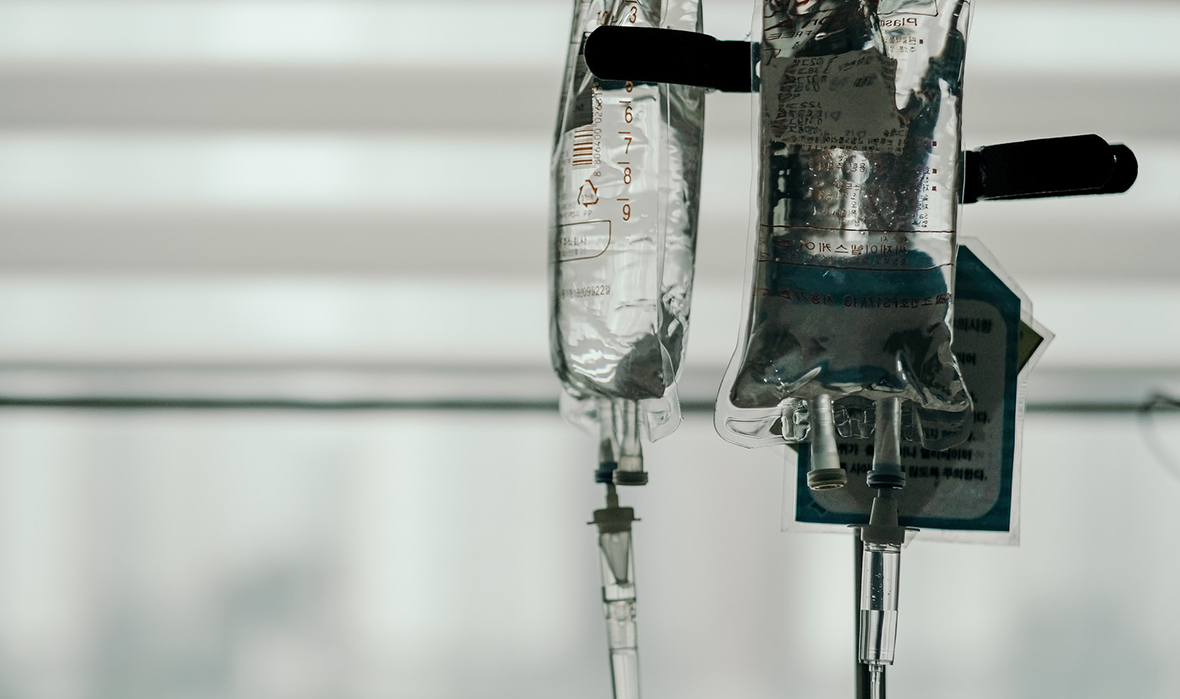Baker to Vegas: Leveraging Pulsara to Manage a Planned Event
Although they have the advantage of prior awareness and preparation, large-scale planned events pose unique challenges for emergency management...
5 min read
 Hannah Ostrem
:
Jan 24, 2017
Hannah Ostrem
:
Jan 24, 2017

EDITOR'S NOTE: The following content originally appeared on EMS1.com as paid content sponsored by Pulsara. Special thanks to our guest blogger, Drew Rinella for EMS1 BrandFocus. Drew is the clinical coordinator for Bonner County EMS in rural North Idaho. He is a paramedic, public servant, and competition shooter. Drew is an advocate for quality in EMS and also blogs his crusade against bad EKGs in product advertising.
Acid-base physiology plays an underrated role in the prehospital and interfacility care of our patients. The ventilator is one tool field providers can use to affect change to a patient’s pH, and even a simple ventilator can accomplish quite a bit. Here are 10 things you need to know about fixing a pH imbalance without using an IV.
 Derived from the German potenz, or power, and the elemental symbol for hydrogen, pH is a scale for measuring the amount of hydrogen ions in a solution[1]. When the human body’s pH begins to creep outside of normal ranges, it attempts to fix the imbalance in three different ways.
Derived from the German potenz, or power, and the elemental symbol for hydrogen, pH is a scale for measuring the amount of hydrogen ions in a solution[1]. When the human body’s pH begins to creep outside of normal ranges, it attempts to fix the imbalance in three different ways.
The fastest method is the buffer system, which works immediately to release hydrogen ions from carbonic acid in order to lower pH, or to absorb hydrogen ions into carbonic acid when the pH must be increased. Second, in order of speed, is the respiratory system, which allows the patient to exhale away carbon dioxide (CO2). When CO2 is blown away through the respiratory system, pH increases by reducing the amount of CO2 available to create carbonic acid, causing less carbonic acid to be available in the body to then release hydrogen ions. Finally, the slowest compensatory mechanism is the renal system, which excretes excess acids or bases over the course of days.
When EMS providers assume control over a patient’s respirations, it becomes possible to alter the patient’s pH via the respiratory system.
Increasing or decreasing total minute volume is the primary method by which EMS providers can affect a patient’s pH. Minute volume is calculated by multiplying tidal volume and respiratory rate.
Tidal Volume x Respiratory Rate = Minute Volume
Increasing minute volume eliminates more carbon dioxide from the blood, increasing pH, and decreasing minute volume allows the patient to retain more carbon dioxide, decreasing their pH.
When making decisions for ventilator settings that will affect pH, be sure to check the time on the most recent arterial blood gasses (ABG). A lot can change in a few hours, and an old ABG may not reflect the patient’s current condition accurately.
Medical science has not yet provided an easy and affordable method of drawing and measuring ABGs in the field setting. However, waveform capnography is now ubiquitous, and end tidal CO2 (ETCO2), measured through capnography, has been proven to closely mirror the real-time arterial CO2 level (PaCO2)[2][3].
In general, a 10 mmHg change in PaCO2 causes a pH change of 0.08 in the opposite direction[4]. Because ETCO2 very closely tracks PaCO2, field personnel can use ETCO2 as a guide for correcting pH imbalance. A patient with a pH of 7.24 and an ETCO2 of 55 would need an ETCO2 decrease of 20 mmHg to raise the pH to 7.4, which may be achieved by increasing minute volume.
When changing ventilator settings to adjust pH, the effect on the patient’s serum potassium level must be considered. As a general rule, a change in pH of 0.1 results in a potassium change of 0.6 mmol/L in the opposite direction[5]. If the desired change in pH is expected to push the potassium level outside of its normal range, the patient may possibly require additional treatment for hypo or hyperkalemia.
Sodium Bicarbonate has fallen out of favor as a routine treatment for acidosis, with no proven benefit linked to its use outside of situations where bicarbonate loss is a concern[6]. If local protocols do indicate the use of sodium bicarbonate, care must be taken to ensure adequate ventilation is taking place in order to remove the buildup of CO2 which occurs as a side effect of sodium bicarbonate administration[7].
The ability for oxygen to be released from hemoglobin and transferred to the tissues depends on the availability of CO2 within the tissues. The Bohr Effect causes tissues with greater concentrations of CO2 to receive more oxygen. When a patient has been hyperventilated, the low PaCO2 (hypocapnia) and resultant respiratory alkalosis can interfere with oxygen offloading from hemoglobin, and decrease oxygenation of the tissues. This constitutes a left shift in the oxygen-hemoglobin dissociation curve. Unfortunately, a shift too far to the right on the curve (acidosis) can also negatively affect oxygenation, reducing the hemoglobin’s ability to collect and transport oxygen from the lungs[8].
Critical care paramedics and nurses are well versed in the management of acid-base derangements through manipulation of ventilator settings, but this knowledge applies to field paramedics and EMTs as well. The excitable rookie unknowingly hyperventilating a cardiac arrest patient may be reducing the patient’s chance for survival by causing hypocapnia and alkalosis[9]. Field personnel must also be aware of the effect hyperventilation has upon cerebral blood flow, with reductions in PaCO2 having a direct effect on cerebrospinal fluid pH, causing vasoconstriction of the cerebral arteries and potentially reduced perfusion to the brain[10].
When stress and anxiety causes a person to hyperventilate, the effects of the resultant hypocapnia can be felt as numbness or tingling around the mouth and in the extremities[7]. Increased neuromuscular irritability manifests as carpopedal spasms, and reduced blood flow to the brain may cause the patient to feel light headed. ETCO2 can serve as a helpful guide to identifying an anxiety attack, providing demonstrable evidence to the patient that they are breathing faster than their body requires. Coaching these patients to calm down and breathe at a normal rate can reduce or eliminate the symptoms of an acute anxiety reaction.
1.“pH." www.merriam-webster.com. Merriam-Webster, n.d. Web. 21 June 2016.
2.Casati, A., G. Gallioli, M. Scandroglio, R. Passaretta, B. Borghi, and G. Torri. "Accuracy of End-tidal Carbon Dioxide Monitoring Using the NBP-75® Microstream Capnometer. A Study in Intubated Ventilated and Spontaneously Breathing Nonintubated Patients." European Journal of Anaesthesiology 17.10 (2000): 622-26. Web. 21 June 2016.
3. Mcnulty, Stephen E., John Roy, Marc Torjman, and Joseph L. Seltzer. "Relationship between Arterial Carbon Dioxide and End-tidal Carbon Dioxide When a Nasal Sampling Port Is Used." Journal of Clinical Monitoring 6.2 (1990): 93-98. Web. 21 June 2016.
4. Crawford, Anna, MD, and Adebola Adesanya, MD. "Interpretation of Arterial Blood Gases." Anesthesia Central. Unbound Medicine, n.d. Web. 21 June 2016.
5. Porter, William, and Dawn Phipps. Porter's Pocket Guide to Emergency and Critical Care, Ninth Edition. Sudbury, MA: Jones and Bartlett, 2007. Print.
6. Adeva-Andany, Maria M., Carlos Fernandez-Fernandez, David Mourino-Bayolo, Elvira Castro-Quintela, and Alberto Dominguez-Montero. "Sodium Bicarbonate Therapy in Patients with Metabolic Acidosis." The Scientific World Journal 2014 (2014): n. pag. Web. 21 June 2016.
7. Brandis, Kerry. "Acid-Base Physiology." Anesthesia Education. Kerry Brandis, 30 Aug. 2015. Web. 21 June 2016.
8. "OxyHemoglobin Dissociation CurveShockwave." RnCeus Interactive, LLC, n.d. Web. 21 June 2016.
9. Eastwood, Glenn M., Paul J. Young, and Rinaldo Bellomo. "The Impact of Oxygen and Carbon Dioxide Management on Outcome after Cardiac Arrest." Current Opinion in Critical Care 20.3 (2014): 266-72. Web. 21 June 2016.
10. Yoon, Seonghun, Mario Zuccarello, and Robert M. Rapoport. "PCO2 and PH Regulation of Cerebral Blood Flow." Frontiers in Physiology Front. Physio. 3 (2012): n. pag. Web. 21 June 2016.
Drew Rinella is the clinical coordinator for Bonner County EMS in rural North Idaho. He is a paramedic, public servant, and competition shooter. Drew is an advocate for quality in EMS and also blogs his crusade against bad EKGs in product advertising.

Although they have the advantage of prior awareness and preparation, large-scale planned events pose unique challenges for emergency management...

For Those Who Love a Good "Oopsie!" At Pulsara, we pride ourselves on enabling secure, HIPAA-compliant communication for healthcare teams. But let’s...

March Recap A New Integration: Improving Data Management, Streamlining Workflows, and Improving Care CoordinationOnly a few days ago, we announced...